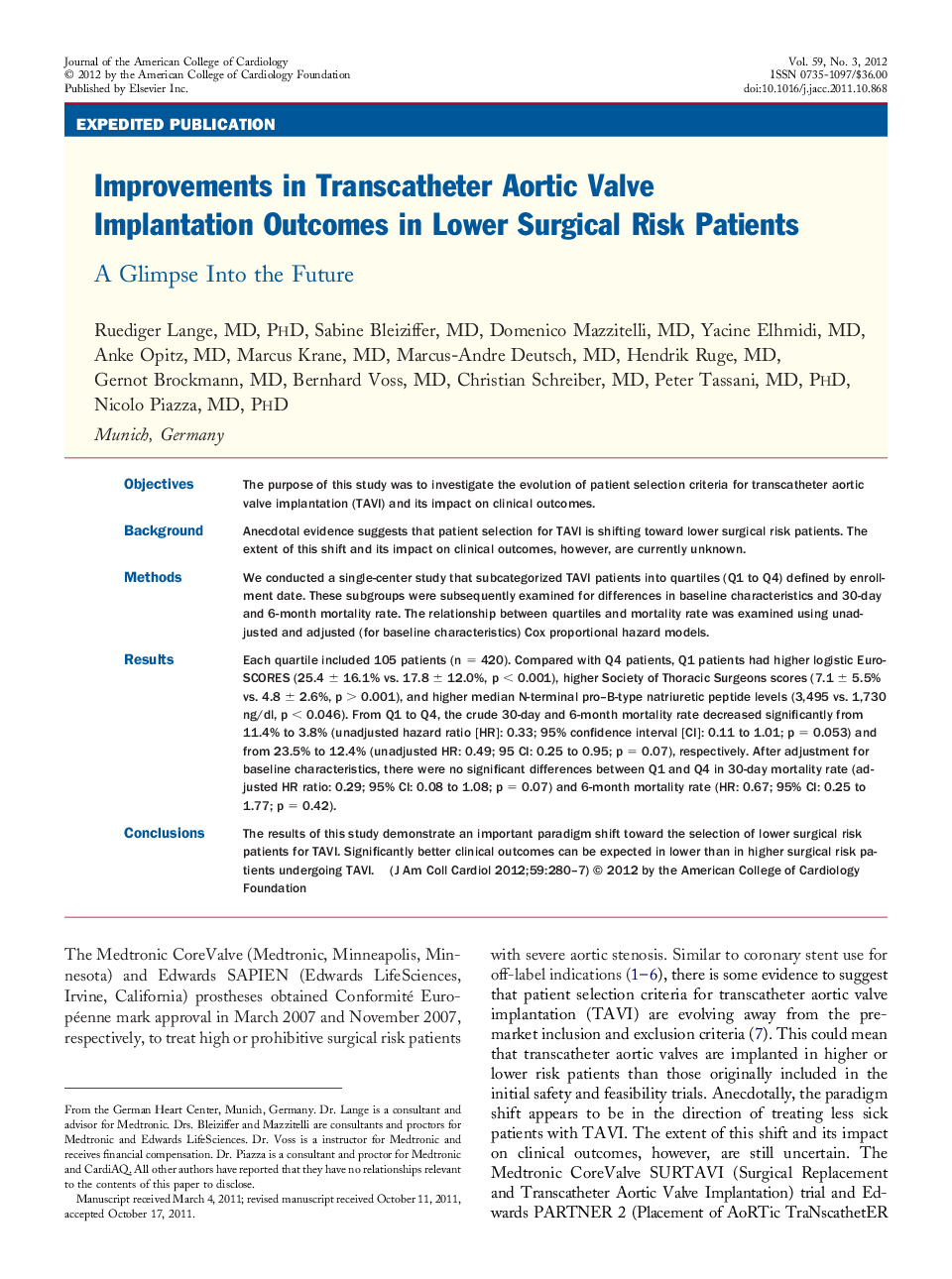| کد مقاله | کد نشریه | سال انتشار | مقاله انگلیسی | نسخه تمام متن |
|---|---|---|---|---|
| 2948102 | 1577229 | 2012 | 8 صفحه PDF | دانلود رایگان |

ObjectivesThe purpose of this study was to investigate the evolution of patient selection criteria for transcatheter aortic valve implantation (TAVI) and its impact on clinical outcomes.BackgroundAnecdotal evidence suggests that patient selection for TAVI is shifting toward lower surgical risk patients. The extent of this shift and its impact on clinical outcomes, however, are currently unknown.MethodsWe conducted a single-center study that subcategorized TAVI patients into quartiles (Q1 to Q4) defined by enrollment date. These subgroups were subsequently examined for differences in baseline characteristics and 30-day and 6-month mortality rate. The relationship between quartiles and mortality rate was examined using unadjusted and adjusted (for baseline characteristics) Cox proportional hazard models.ResultsEach quartile included 105 patients (n = 420). Compared with Q4 patients, Q1 patients had higher logistic EuroSCORES (25.4 ± 16.1% vs. 17.8 ± 12.0%, p < 0.001), higher Society of Thoracic Surgeons scores (7.1 ± 5.5% vs. 4.8 ± 2.6%, p > 0.001), and higher median N-terminal pro–B-type natriuretic peptide levels (3,495 vs. 1,730 ng/dl, p < 0.046). From Q1 to Q4, the crude 30-day and 6-month mortality rate decreased significantly from 11.4% to 3.8% (unadjusted hazard ratio [HR]: 0.33; 95% confidence interval [CI]: 0.11 to 1.01; p = 0.053) and from 23.5% to 12.4% (unadjusted HR: 0.49; 95 CI: 0.25 to 0.95; p = 0.07), respectively. After adjustment for baseline characteristics, there were no significant differences between Q1 and Q4 in 30-day mortality rate (adjusted HR ratio: 0.29; 95% CI: 0.08 to 1.08; p = 0.07) and 6-month mortality rate (HR: 0.67; 95% CI: 0.25 to 1.77; p = 0.42).ConclusionsThe results of this study demonstrate an important paradigm shift toward the selection of lower surgical risk patients for TAVI. Significantly better clinical outcomes can be expected in lower than in higher surgical risk patients undergoing TAVI.
Journal: Journal of the American College of Cardiology - Volume 59, Issue 3, 17 January 2012, Pages 280–287